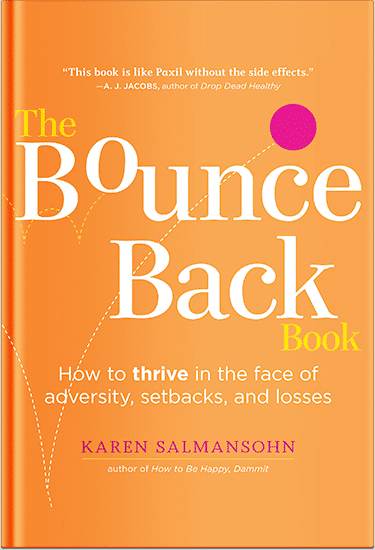 Bleeding and swelling in the gums can often start small but may lead to bigger problems when ignored. Many people experience sensitivity or discomfort after brushing or eating, which can be an early warning sign of infection. Over time, untreated inflammation can cause discomfort, bone loss, or even tooth loss. Some people wonder if replacing missing teeth or getting artificial solutions might stop the condition from worsening. It’s important to understand what causes gum problems and how various treatment options can help.
Bleeding and swelling in the gums can often start small but may lead to bigger problems when ignored. Many people experience sensitivity or discomfort after brushing or eating, which can be an early warning sign of infection. Over time, untreated inflammation can cause discomfort, bone loss, or even tooth loss. Some people wonder if replacing missing teeth or getting artificial solutions might stop the condition from worsening. It’s important to understand what causes gum problems and how various treatment options can help.
Here are some simple and effective ways to manage gum disease and heal bleeding, while restoring comfort, balance, and confidence in your daily routine:
Recognizing the Early Signs of Gum Problems
Early symptoms often begin with minor bleeding when brushing or flossing. The gums may appear swollen, tender, or slightly red. These are signs that bacteria are building up beneath the surface. When detected early, professional cleaning and improved daily care can reverse mild inflammation before it progresses. It’s also helpful to notice bad breath or a persistent bad taste, which may indicate deeper issues. Regular check-ins with a dental professional can help track progress and prevent recurrence. Addressing these signs promptly protects both the gums and supporting structures, keeping your mouth comfortable and functional in the long run.
Exploring Treatment Options and How Dentures May Help
When gum disease becomes advanced, patients often experience loose teeth or receding tissue. In such cases, treatment may involve deep cleaning, root planing, or replacing missing teeth to restore stability. However, many people ask, will getting dentures stop gum disease? The answer depends on individual factors, but when managed under professional supervision, dentures can support recovery and prevent further deterioration. Reputable clinics can provide advanced restorative solutions, including partial or full dentures that help distribute pressure evenly and support tissue healing. Their specialists design personalized treatment plans focusing on comfort and long-term function. This approach can improve chewing and speech while reducing irritation.
Maintaining Strong Daily Cleaning Habits
Daily brushing and flossing are the simplest yet most powerful steps in preventing inflammation. Using a soft-bristled brush helps clean gently without harming sensitive areas. Antibacterial rinses can reduce harmful bacteria and promote fresher breath. It’s also wise to replace your brush every few months to avoid reintroducing germs. Paying attention to cleaning along the gumline makes a noticeable difference. For people with limited mobility, electric brushes can offer consistent results. Developing this habit takes time, but it becomes second nature once you experience the comfort of cleaner, healthier tissue. Consistency in your cleaning routine can make a lasting impact on your gum health.
Balanced Diet for Gum Support
Your eating habits influence your gum condition more than you might think. Foods rich in vitamin C, calcium, and omega-3s strengthen the tissues supporting your teeth. Crunchy fruits and vegetables naturally clean surfaces, while leafy greens provide antioxidants that fight bacteria. It’s helpful to cut down on sugary snacks and soft drinks, as these feed harmful bacteria that can worsen inflammation. Staying hydrated encourages saliva flow, which protects your mouth naturally. A diet full of whole grains, proteins, and fresh produce supports recovery and keeps your oral environment balanced. Healthy eating habits work hand in hand with daily cleaning practices.
The Role of Quitting Smoking in Recovery
Smoking has been shown to weaken tissue healing and reduce blood flow to the gums. It also makes treatments less effective and increases the chance of reinfection. Quitting can significantly improve oxygen and nutrient supply to the affected areas, helping them recover faster. People who stop smoking often notice less swelling and bleeding within a few weeks. Nicotine replacements or support groups can make the process easier. Your dental professional can also recommend resources that align with your quitting plan. The benefits go beyond the mouth. You’ll feel better overall and have stronger, more resilient gums.
Managing Stress for Better Healing
Chronic stress weakens the immune system, making it harder for the body to fight infection. Over time, this can worsen gum inflammation or slow recovery. Managing stress through simple techniques like deep breathing, walking, or engaging in relaxing hobbies can help. Getting enough sleep and taking breaks from daily routines also supports better balance. Staying connected with supportive people can lift your mood and help you stay consistent with self-care. By calming your body and mind, you create an environment that promotes faster tissue repair and prevents flare-ups related to tension or fatigue.
Using Antimicrobial Treatments and Medications
In moderate or advanced stages, professionals may prescribe antimicrobial rinses, gels, or short-term antibiotic treatments to control infection. These medications reduce harmful bacteria and allow tissues to heal properly. Some treatments are applied directly to affected areas, while others come as pills or mouth rinses. Using them as directed enhances results and prevents resistance. Combined with regular cleanings and improved home care, these therapies restore stability and comfort. Patients should always discuss side effects or sensitivities with their practitioner to find the most suitable option for their situation. Correct use of prescribed treatments can help speed up recovery and prevent relapse.
Advanced Procedures for Severe Conditions
When the disease reaches advanced stages, more specialized treatments may be necessary. These include flap surgery to remove deep plaque, bone grafts to restore lost structure, or tissue regeneration to rebuild damaged areas. Modern techniques are far more comfortable and precise than before, focusing on long-term preservation rather than replacement. Recovery usually involves close follow-up care and proper cleaning habits at home. The goal of these treatments is to restore natural function and prevent further deterioration. With consistent follow-up, even severe cases can achieve stability and improved comfort over time.
Preventive Habits for Long-Term Gum Stability
Maintaining progress after treatment means staying proactive. Regular appointments, balanced eating habits, and daily cleaning help prevent reinfection. Limiting sugar and alcohol intake supports stronger tissue and healthier breath. Using the right brushing technique and remembering to clean between teeth can prevent hidden plaque from forming. Building these habits into your daily routine reduces the risk of recurring inflammation. Over time, these preventive steps create lasting improvements and make ongoing treatment less frequent. Commitment to maintenance brings peace of mind and keeps your smile comfortable for years to come.
Gum disease doesn’t have to define your comfort or confidence.
With early action, proper treatment, and steady maintenance, recovery is within reach. Replacing missing teeth, improving cleaning habits, and seeking timely professional help all contribute to stronger, healthier gums. The key is staying consistent and proactive with your routine. When you care for your oral environment daily and follow expert advice, you can move from bleeding to healing and keep your smile strong for the long term.
P.S. Before you zip off to your next Internet pit stop, check out these 2 game changers below - that could dramatically upscale your life.
1. Check Out My Book On Enjoying A Well-Lived Life: It’s called "Your To Die For Life: How to Maximize Joy and Minimize Regret Before Your Time Runs Out." Think of it as your life’s manual to cranking up the volume on joy, meaning, and connection. Learn more here.
2. Life Review Therapy - What if you could get a clear picture of where you are versus where you want to be, and find out exactly why you’re not there yet? That’s what Life Review Therapy is all about.. If you’re serious about transforming your life, let’s talk. Learn more HERE.
Think happier. Think calmer.
Think about subscribing for free weekly tools here.
No SPAM, ever! Read the Privacy Policy for more information.
One last step!
Please go to your inbox and click the confirmation link we just emailed you so you can start to get your free weekly NotSalmon Happiness Tools! Plus, you’ll immediately receive a chunklette of Karen’s bestselling Bounce Back Book!


 Bleeding and swelling in the gums can often start small but may lead to bigger problems when ignored. Many people experience sensitivity or discomfort after brushing or eating, which can be an early warning sign of infection. Over time, untreated inflammation can cause discomfort, bone loss, or even tooth loss. Some people wonder if replacing missing teeth or getting artificial solutions might stop the condition from worsening. It’s important to understand what causes gum problems and how various treatment options can help.
Bleeding and swelling in the gums can often start small but may lead to bigger problems when ignored. Many people experience sensitivity or discomfort after brushing or eating, which can be an early warning sign of infection. Over time, untreated inflammation can cause discomfort, bone loss, or even tooth loss. Some people wonder if replacing missing teeth or getting artificial solutions might stop the condition from worsening. It’s important to understand what causes gum problems and how various treatment options can help.